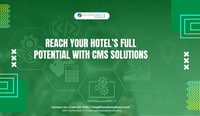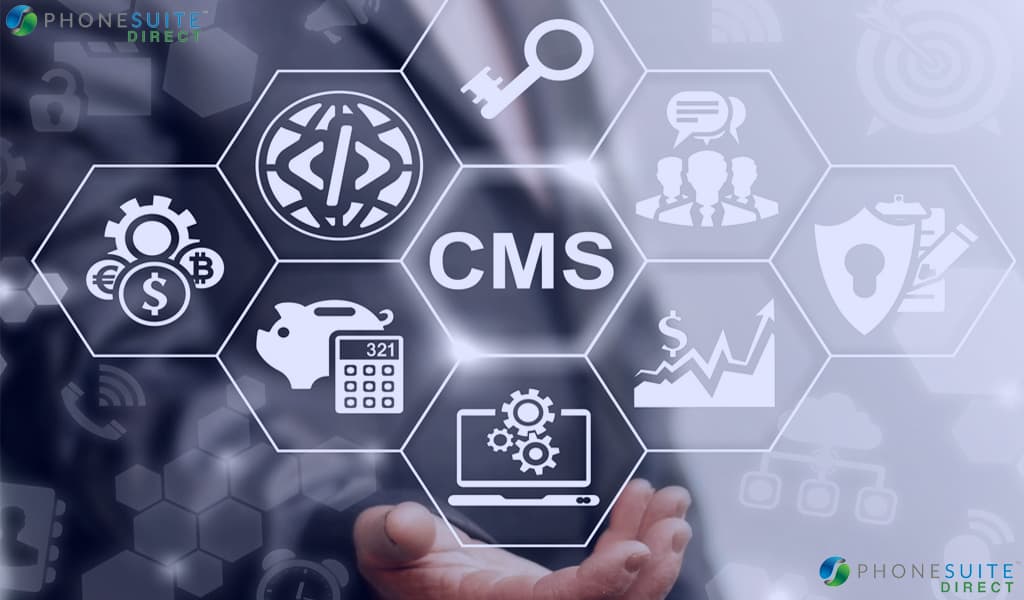
Types of Content Management Systems (CMS)
What is Open Source CMS?
- Open source CMS (Content Management System) is a type of software that provides users with the tools to easily create, manage and publish content for websites, blogs, forums, or other online content platforms.
- Open-source CMSs are typically free to use and have a large community of developers who work to maintain, improve and add new features.
- An open-source CMS is a type of CMS that is freely available for download and modification by anyone. The source code of the CMS is open to the public, allowing developers to modify and customize it to suit their specific needs. Some examples of open-source CMS include WordPress, Drupal, and Joomla.
Advantages for Hotel Businesses Using Open-Source CMS:
Cost-effective:
Open-source CMS is free to download and use, making it an ideal option for small hotel businesses with limited budgets.
Customizable:
The source code of open-source CMS is open to the public, allowing developers to modify and customize it to meet the specific needs of a hotel business.
Large Community Support:
As open-source CMS is widely used, there is a large community of developers and users who can offer support and guidance.
SEO-Friendly:
Open-source CMS platforms like WordPress offer a range of SEO plugins and tools, making it easier for hotels to optimize their website for search engines.
What Is Proprietary CMS?
- Proprietary CMS (Content Management System) is an off-the-shelf software package that provides organizations with a way to manage their content. The system typically includes features such as user authentication, content creation, editing and publishing, site design and management, search engine optimization, and analytics. It can also include add-ons for additional functionality such as blogging, eCommerce, online payments, etc.
- A proprietary CMS is a type of CMS that is owned and licensed by a company. The source code of the CMS is not available to the public, and users are typically required to pay for licensing fees to use the software. Some examples of proprietary CMS include Adobe Experience Manager, Sitecore, and Oracle WebCenter.
Proprietary CMSs differ from open-source systems in that the code is owned by the vendor and not available for modification by the user.
Advantages for Hotel Businesses Using Proprietary CMS:
Security:
Proprietary CMS offers advanced security features that protect against cyber threats and unauthorized access to data.
Vendor Support:
Proprietary CMS vendors offer dedicated support and assistance to users, ensuring that the software runs smoothly and efficiently.
Customizable:
While proprietary CMS may not be open to public modification, vendors often offer customization options to meet the specific needs of their clients.
Scalable:
Proprietary CMS is designed to handle large volumes of content and website traffic, making it an ideal option for hotels with high website traffic and large amounts of content.
What is Software as a Service (SaaS) CMS?
- Software as a service (SaaS) CMS is a type of Content Management System that delivers web-based applications over the internet via subscription. It provides users with access to an online platform where they can manage their websites, create and publish content, track analytics, and more. It eliminates the need for users to have any knowledge of coding or installation of software, as it is all managed through the cloud.
- A SaaS CMS is a type of CMS that is hosted and managed by a third-party provider. Users typically pay a monthly subscription fee to use the software, and the provider is responsible for maintaining and updating the software. Some examples of SaaS CMS include Wix, Squarespace, and Shopify.
Advantages for Hotel Businesses using SaaS CMS:
Easy To Use:
SaaS CMS typically offer a user-friendly interface that requires little technical expertise to operate, making it ideal for small hotel businesses with limited resources.
Low Upfront Costs:
SaaS CMS typically have low upfront costs, as users only need to pay a monthly subscription fee.
Scalable:
SaaS CMS can be easily scaled up or down depending on the needs of the hotel business, making it an ideal option for businesses with fluctuating website traffic and content needs.
Up-To-Date Software:
SaaS CMS providers are responsible for updating and maintaining the software, ensuring that users have access to the latest features and security updates.
Few additional things to consider when choosing a CMS for a hotel business. Here are some further points to consider:
Multi-Language Support
Hotels may need to cater to guests from all over the world, which means that having a CMS that supports multiple languages is crucial. Some CMS, such as WordPress, offer plugins that can easily translate content into different languages, making it easier for hotels to reach a wider audience.
Mobile Responsiveness
With more people accessing websites on mobile devices, it’s essential that hotels have a CMS that is mobile responsive. This means that the website can adjust to fit the screen size of a mobile device, making it easier for guests to browse and book rooms on the go.
Booking System Integration
For hotels, having a booking system integrated into their CMS is important. This allows guests to book rooms and make payments directly through the hotel’s website. Some CMS, such as Wix, offer built-in booking systems, while others may require the use of plugins or third-party software.
Social Media Integration
Social media can be a powerful tool for hotels to promote their business and engage with customers. Some CMS, such as Squarespace, offer built-in social media integration, making it easy for hotels to share content and engage with customers on social media platforms.
Content Creation and Management
Hotels need to regularly update their website with new content, such as blog posts, images, and videos. A CMS that offers easy content creation and management tools can help hotels save time and streamline their content creation process. Some CMS, such as Drupal, offer powerful content creation and management tools, while others may be more user-friendly for non-technical users.
There are several factors to consider when choosing a CMS for a hotel business, such as multi-language support, mobile responsiveness, booking system integration, social media integration, and content creation and management tools. By considering these factors and weighing the pros and cons of each type of CMS, hotels can choose a CMS that meets their specific needs and helps them succeed online.
Content Management Architectures
Content Management Architectures are structures that allow for the storage, retrieval, and management of content. This architecture can be built to manage any type of content, including text, images, videos, and audio. Content Management Architectures typically include a database layer, an application layer, and a presentation layer.
The database layer stores the content as well as the metadata associated with it. The application layer is responsible for managing the content such as adding, editing, or deleting it from the system. The presentation layer provides users with a way to view the content in a format that is organized and easy to understand.
Content Management Architectures can be used for both small and large businesses for creating websites, blogs, or other digital publications containing digital media assets. There are three main types of CMS architectures: Traditional CMS, Headless CMS, and Hybrid CMS. Each architecture has its own strengths and weaknesses, and it’s important to understand the differences between them to choose the best one for your needs.
Traditional CMS Architecture
A traditional CMS is a software that helps users create, manage, and modify content on a website without needing to have any technical knowledge. It provides users with an intuitive interface for creating and editing content, as well as the ability to easily add new pages and features. Traditional CMSs also allow for easy integration of third-party services such as analytics or marketing tools.
Traditional CMS architecture is the most common type of CMS. It consists of a single application that is responsible for both content creation and content delivery. The content is created and managed within the CMS, and then published to the website or other digital platforms.
Advantages:
- Easy to use for non-technical users
- Built-in tools for content creation, management, and publishing
- Includes templates for website design and layout
- Good for small to medium-sized websites with a relatively simple content structure
Pain Points:
- Limited flexibility in terms of content delivery
- Can be slow and difficult to scale for larger websites or complex content structures
- Limited integration with other systems or platforms
- Difficult to support multiple channels, such as mobile or social media
Headless CMS Architecture
A headless CMS is a type of content management system that allows users to manage and deliver content without the need for a front-end graphical user interface. In other words, it separates the content from its presentation, allowing it to be consumed in a variety of ways. This makes it easier to build digital experiences that are tailored to a specific audience or platform.
Headless CMSes also provide benefits such as improved scalability and performance, reduced development time, and improved security.
Headless CMS architecture separates the content creation and management from the content delivery. In this architecture, the content is created and managed in a backend system, and then delivered to the website or other digital platforms via an API (Application Programming Interface).
Advantages:
- Greater flexibility in content delivery
- Can support multiple channels and platforms, such as mobile or social media
- Allows for easy integration with other systems or platforms
- Good for websites with complex content structures and dynamic content
Disadvantages:
- Can be more difficult to set up and manage
- Requires technical expertise to use and maintain
- No built-in templates or design tools
- Requires separate development for the front-end of the website or platform
Hybrid CMS Architecture
A Hybrid CMS is a Content Management System (CMS) that combines elements from both traditional and modern web development technologies. This type of system provides flexibility and scalability, allowing users to develop complex websites quickly and efficiently. It also makes it easier for developers to create custom solutions for clients with specific requirements. Hybrid CMSs often offer the ability to seamlessly integrate with third-party tools such as e-commerce systems, marketing automation tools, and analytics platforms.
Ultimately, Hybrid CMSs provide a powerful platform for web development that can be adapted to meet the needs of any type of website or application.
Hybrid CMS architecture combines the features of both traditional and headless CMS. It allows for both content creation and management within the CMS, as well as content delivery via an API.
Advantages:
- Offers the flexibility of headless CMS with the ease of use of traditional CMS
- Allows for easy content creation and management, as well as flexibility in content delivery
- Good for websites with complex content structures and dynamic content, but also need a simple user interface
Disadvantages:
- Can be more complex to set up and manage than traditional CMS
- Can be more expensive than traditional CMS
- May not offer the same level of flexibility as headless CMS
Choosing The Right Partner For Your Business
Choosing the right partner is vital to the success of your business. You want a partner with extensive industry experience who can provide expert insight and guidance throughout the process. With so much money on the line, you can’t afford to make any mistakes. That’s where we come in. We have years of experience in telecommunications, IT, and logistics, and we’re ready to put that expertise to work for you.
Contact us today for a free quotation and let us help you take your business to the next level.



